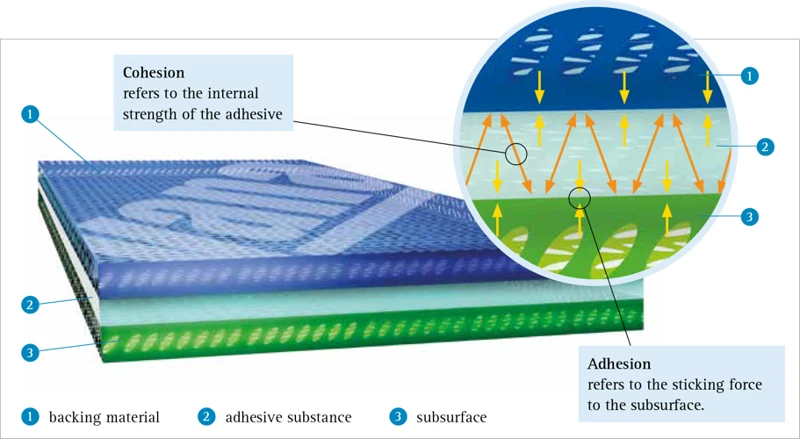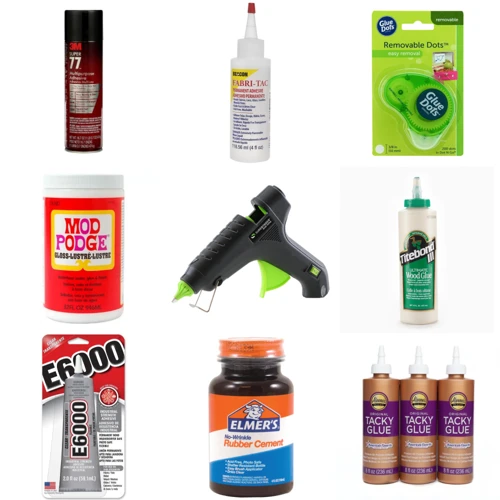When it comes to bonding materials, nature has provided us with a remarkable tool: adhesive properties. These properties are the fundamental aspects that make materials stick together, creating a bond that can hold up under various conditions. Understanding why and how these adhesive properties function is essential when selecting the appropriate product for any task. In this exploration, we delve into the science of adhesion, the different types of glue available, and their applications across multiple industries.
The Chemistry Behind Glue
Glue Composition
At the core of glue chemistry is its composition, a formulation designed to adhere with tenacity. Typically, glues contain polymers that provide the sticky characteristics necessary for binding materials together. These polymers can be natural, such as in the case of animal glues, or synthetic, like those found in superglues. Moreover, solvents, stabilizers, and hardeners may also be present to modulate the glue’s properties for specific uses.
Bonding Mechanisms
The magic of glue lies in its bonding mechanisms. These mechanisms can be physical, chemical, or a combination of both. Physical bonds might involve mechanical interlocking or van der Waals forces, while chemical bonds can involve covalent or ionic interactions. The choice of bonding mechanism is determined by the nature of the materials being joined and the desired durability of the bond.
How Does Glue Work?
So, how does glue work exactly? The answer is a blend of science and practicality. When glue is applied, it begins a process of wetting the surface, spreading out to maximize contact. As it cures, a phase known as solidification, the molecules in the glue cross-link, creating a strong and often permanent bond. This transformation from liquid to solid is what gives glue its holding power, allowing for a myriad of applications.
Exploring Different Types of Glue
Adhesive Technology
Adhesive technology has evolved to produce a wide array of types of glue, each with specialized characteristics. From water-based PVA glues ideal for porous materials to epoxy resins that can withstand extreme conditions, the options are vast. Even within these categories, technological advancements have led to improvements in performance, such as increased flexibility or faster curing times. Understanding the unique benefits of each type is crucial in making an informed decision for any project.
Glue Applications in Various Industries
Glue applications are not limited to the confines of a craft room; they stretch across various industries. In construction, adhesives are used for paneling and flooring. The automotive industry relies on them to bond parts without compromising vehicle integrity. Medical devices often utilize biocompatible glues for both external and internal use. Indeed, the role of glue in industrial applications is as diverse as it is critical.
Factors Influencing Glue Strength
Several factors play into the efficacy of glue strength factors. The surface preparation, environmental conditions, and type of stress applied to the bond can all impact the performance of an adhesive. For instance, a clean, rough surface may provide better adhesion than a smooth, dirty one. Similarly, high humidity can weaken some adhesives, while others might be designed to resist moisture. The interplay of these elements dictates the strength and durability of the bond.
If you’ve ever wondered about the sticky science behind adhesives, you’re in the right place. Our comprehensive guide explores how glue works and delves into the specifics of its bonding process. For those curious about different applications and the broader context, our article on what glue work entails is a great resource. Additionally, for the DIY enthusiasts or anyone interested in the manufacturing side, we have a fascinating piece on how to make glue at home or in a factory setting. Join us as we unravel the mysteries of this everyday, yet remarkable, substance!
The Glue Curing Process
The glue curing process is a critical final step in the journey of adhesion. This process can vary widely depending on the type of adhesive used. Some glues will cure at room temperature, while others require heat, light, or moisture to initiate the curing process. The time it takes for a glue to fully cure can range from a few seconds to several hours or even days. Understanding the curing process helps ensure a bond that lasts, fulfilling the promise of the adhesive properties at play.



